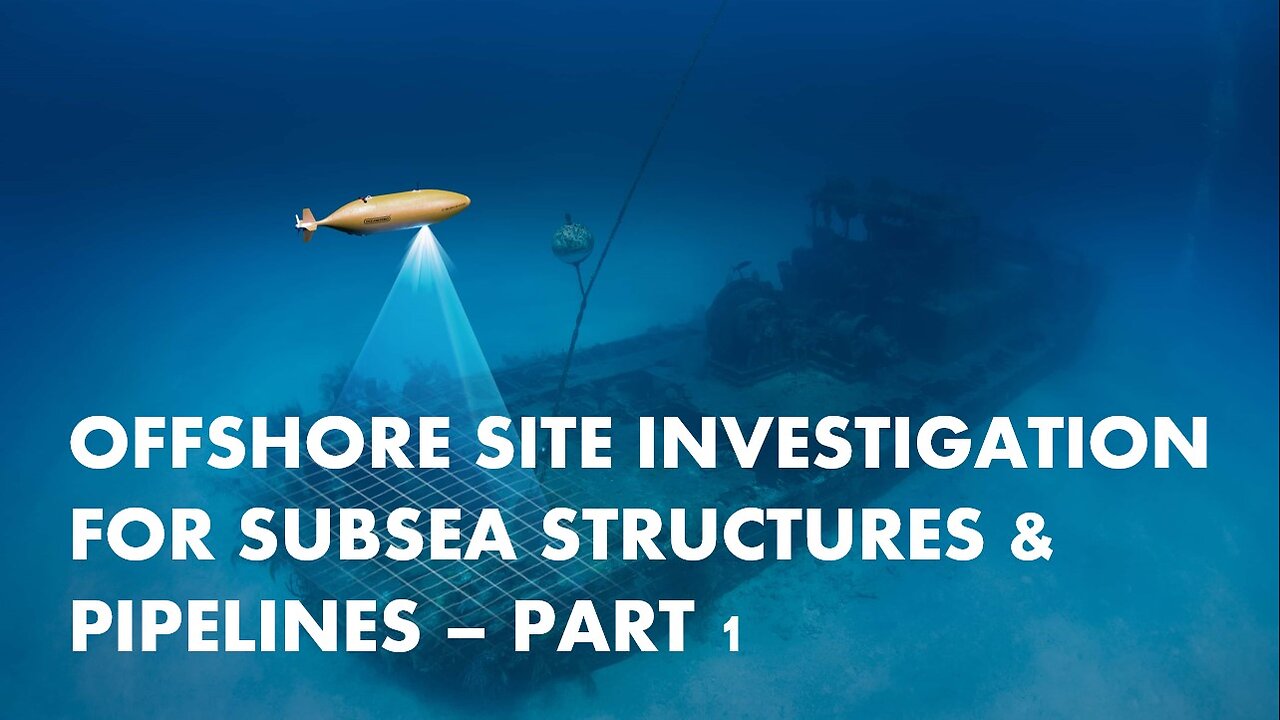Premium Only Content

Offshore Site Investigation for Subsea Structures & Pipelines - Part 1
The size of the project, the location of the project, the water depth and phase of the project would all be a large factor in defining an offshore S.I scope of work. Have you performed a risk assessment to define the main requirements of the S.I (where is your soils risk)?
If the schedule allows, the Geophysical S.I should be performed first as this will give an immediate indication of major issues (slopes, geohazards, rock outcrops, shallow gas) within the corridor of proposed subsea architecture installation.
Geotechnical sampling can then also be planned/targeted in areas of interest as identified from the preliminary geophysical interpretation. Are specifc cores required to allow a geohazard assessment to be performed?
When both geophysical and geotechnical data has been acquired it is vital that the data is integrated such that interpretation of geophysics is aided by the geotechnical ground truthing. This may take the form of a ground model and / or a fully integrated GIS suite of data.
Laboratory testing on Geotechnical samples should be planned in accordance with design requirements, thus it is key to identify the expected foundation solutions early in the project. Laboratory testing type or specification should be determined with specific foundation types in mind.
Undertaking the correct S.I for the project is critical for the mitigation of future risk for all parties involved and can lead to significant cost savings in design and thus fabrication / installation.
For full videos you can visit this link:
https://drive.google.com/file/d/18XZT52lp4PFJGciz216a9Yy536BVJ6hk/view?usp=sharing
and you will be directed to a google drive link where you can download all files of this course
https://drive.google.com/file/d/1mKZuVo2ZkP_tqHXegopRdgTqeGmEAdGk/view?usp=drive_link
-
 1:04:17
1:04:17
Jeff Ahern
2 hours agoThe Saturday Show with Jeff Ahern
3K4 -
 44:34
44:34
Chris Harden
2 days agoWhat Happened to Rock Island, Illinois?
3.59K4 -
 30:56
30:56
Advanced Level Diagnostics
6 days ago2004 Chevy Silverado - Won't Shut Off!
3.89K1 -
 7:05
7:05
Spooky Grandpa's Scary Stories
7 months agoThose Who Linger - Halloween, Ghost Stories, Horror, Haunted, Cemetery, Folklore
3.09K16 -
 2:23
2:23
Memology 101
1 day ago $0.63 earnedAOC spits completely made-up BULLSH*T during UNHINGED anti-Republican rant
3.5K27 -
 1:55
1:55
NAG Daily
20 hours agoHEADLINES FOR THE JILTED MASSES W/GreenMan Reports
1.76K -
 LIVE
LIVE
GrimmHollywood
5 hours ago🔴LIVE • GRIMM HOLLYWOOD • ARC RAIDERS • DAY 2 •
127 watching -
 3:02:36
3:02:36
CassaiyanGaming
5 hours ago🟢LIVE - BATTLEFIELD 6 - MEDIC SHIFT - Doing My Duty
22.8K1 -
![Mr & Mrs X - ICE Is A Threat To The [DS] Agenda, The ICE Insurgency Will Fail - EP 12](https://1a-1791.com/video/fww1/b2/s8/1/o/V/N/r/oVNrz.0kob-small-Mr-and-Mrs-X-ICE-Is-A-Threa.jpg) 46:10
46:10
X22 Report
6 hours agoMr & Mrs X - ICE Is A Threat To The [DS] Agenda, The ICE Insurgency Will Fail - EP 12
95.4K47 -
 3:56:47
3:56:47
Shield_PR_Gaming
6 hours ago10/18/25 | WARNING!!! 18+ Battlefield 6 Dev Dogtags?
28.4K1